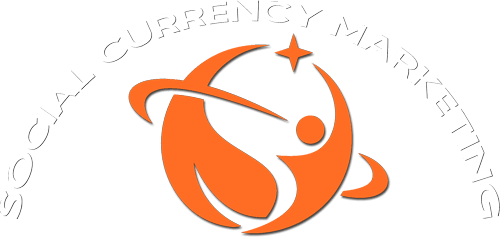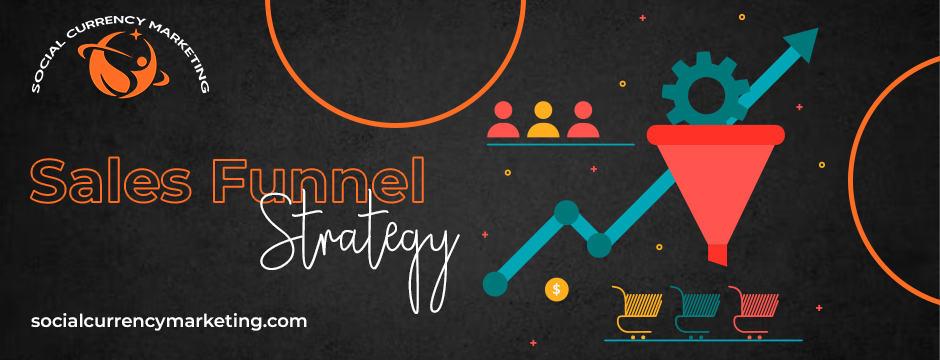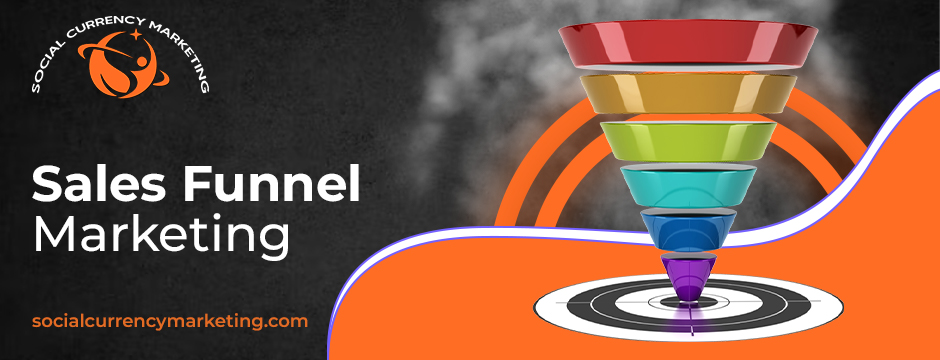In the dynamic and highly competitive world of digital marketing, a well-optimized sales funnel is the backbone of converting website visitors into loyal customers. Your sales funnel is the roadmap that guides potential customers through the intricate journey of awareness to making a purchase. To boost your conversion rates and generate more leads and sales, it’s vital to implement effective sales funnel strategies. In this comprehensive blog, we will explore ten proven sales funnel strategies to help you optimize your funnel and, ultimately, improve your conversion rates. These strategies will not only enhance your business but also position your website favorably on Google’s search results.
1. Create Compelling Landing Pages
The journey through a successful sales funnel commences with a compelling landing page. It serves as the digital storefront, making the first impression on potential customers. The significance of your landing page cannot be overstated. It should be visually appealing, load quickly, and provide a clear and concise value proposition. Utilize persuasive copy and engaging visuals to capture the attention of your visitors and entice them to explore further.
A well-designed landing page has a twofold effect: it reduces bounce rates by retaining visitors, and it increases the chances of conversion. Google rewards user-friendly and engaging webpages by ranking them higher in search results. This means that your landing page design has a direct impact on your search engine optimization (SEO) efforts.
2. Implement A/B Testing
A/B testing, or split testing, is a powerful strategy for optimizing your sales funnel. It involves creating two or more variations of a page or element within your funnel to identify which one performs better. By testing different headlines, images, calls to action, and other elements, you can systematically identify what resonates most with your target audience.
The results of A/B testing provide valuable insights that empower data-driven decision-making. It helps refine your sales funnel elements, ultimately enhancing user experience and driving higher conversion rates. Google’s algorithms favor websites with low bounce rates, making A/B testing an essential tool for ranking higher in search results.
3. Build Trust with Social Proof
Trust is the cornerstone of any business-consumer relationship. Consumers are more likely to trust a product or service others have tried and approved. Incorporate social proof into your sales funnel to build trust and credibility. Social proof can take the form of customer reviews, testimonials, and case studies that showcase the positive experiences of your past customers. By highlighting the success stories of others, you can alleviate any doubts potential customers may have and encourage them to take action.
Search engines like Google assess user engagement and interaction on your website as indicators of its credibility. By featuring social proof prominently on your site, you not only build trust with potential customers but also create an environment that search engines perceive as trustworthy, potentially boosting your ranking.
4. Leverage Email Marketing
Email marketing is a critical component of a successful sales funnel. It’s a direct and personalized channel that allows you to nurture leads and guide them through the various funnel stages. To keep leads engaged and move them closer to a purchase decision, provide valuable content, personalized recommendations, and exclusive offers. Sales funnel marketing is a versatile tool that can help you nurture relationships, establish authority in your niche, and drive conversions.
Regular email interactions with your audience can also improve your SEO ranking. Email campaigns can drive traffic to your website, increase user engagement, and reduce bounce rates—factors that Google considers when determining your site’s ranking.
5. Segment Your Audience
Not all leads are at the same stage of the buying journey. To optimize your sales funnel, segment your audience based on their interests, behaviors, and demographics. This segmentation allows you to deliver more targeted content and offers, increasing the likelihood of conversions. By offering personalized experiences and content, you show potential customers that you understand their needs and are here to help.
Segmenting your audience also helps you avoid sending irrelevant messages, reducing the risk of unsubscribes. Google recognizes the importance of personalized experiences, and it rewards websites that cater to user preferences with higher rankings.
6. Offer Valuable Lead Magnets
Lead magnets are free, high-value resources you offer visitors in exchange for their contact information. These can include eBooks, webinars, templates, exclusive reports, and other valuable content. By offering lead magnets that are relevant to your audience’s needs and interests, you not only capture leads but also establish your authority in your niche.
A well-designed lead magnet is a win-win: it provides value to your audience, and in return, you gain valuable leads. These leads can be nurtured through your sales funnel, resulting in conversions and sales. High-value lead magnets also tend to generate backlinks, a factor that Google considers when ranking websites.
7. Use Retargeting Ads
Not all visitors will convert on their first visit to your website. This is where retargeting ads come into play. Regarding marketing and sales funnel, they allow you to re-engage these prospects and guide them back into your sales funnel. By showing ads to people who have already visited your site, you can remind them of your products or services and encourage them to take the next step.
Retargeting ads have a double benefit. They not only increase the likelihood of conversions by re-engaging visitors but also increase the number of interactions with your site. This metric can positively influence your search engine ranking.
8. Simplify the Checkout Process
A complicated and time-consuming checkout process can lead to cart abandonment and lost sales. To streamline your sales funnel, it’s essential to simplify the checkout process. Reduce the steps required for a purchase and ask for only essential information. Offer multiple payment options and ensure that the checkout page is mobile-friendly. As many customers shop on mobile devices, an easy and quick checkout can significantly impact conversion rates.
Additionally, a seamless and efficient checkout process can improve the user experience, leading to lower bounce rates and higher engagement, factors that Google considers when determining your site’s ranking.
9. Monitor Analytics and KPIs
To continuously improve your sales funnel, you must track key performance indicators (KPIs) and analyze analytics data. Metrics like conversion rate, click-through rate, bounce rate, and exit rate can provide valuable insights into your funnel’s performance. By closely monitoring these KPIs, you can identify areas that need improvement and take action accordingly.
Utilizing tools like Google Analytics can offer a wealth of insights into user behavior, site performance, and the effectiveness of your sales funnel. As you make data-driven improvements to your funnel, you will likely see a positive impact on your SEO ranking.
10. Optimize for Mobile
With mobile usage on the rise, it’s crucial to ensure that your sales funnel is mobile-friendly. Mobile users should have a seamless and responsive experience when navigating your funnel. Google also prioritizes mobile-friendly websites in its search results, making mobile optimization crucial for SEO and ranking.
Mobile optimization is not just about responsive design but also about fast loading times, easy navigation, and thumb-friendly buttons. By providing a top-notch mobile experience, you not only improve user satisfaction but also enhance your search engine ranking.
Conclusion
In the fast-paced digital landscape, a well-optimized sales funnel is the cornerstone of business success. By implementing these ten proven sales funnel strategies, you’ll not only boost your conversion rates and generate more leads and sales but also enhance your website’s performance on Google’s search results. Remember that a successful sales funnel is a dynamic work in progress. Regularly test and refine your strategies, stay attuned to your audience’s evolving needs and preferences, and watch the latest trends and technologies that can further optimize your funnel.
Creating compelling landing pages, utilizing A/B testing, building trust with social proof, leveraging email marketing, segmenting your audience, offering valuable lead magnets, using retargeting ads, simplifying the checkout process, monitoring analytics and KPIs, and optimizing for mobile are the building blocks of a high-converting and SEO-friendly sales funnel. These strategies, when executed effectively and consistently, can lead to significant improvements in your business’s bottom line and your website’s visibility on Google’s search results.
Want to find out more? Visit us at Social Currency Marketing!



